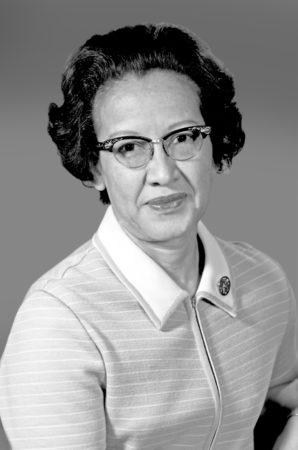Heroes of Space: Katherine Johnson

Image credit: NASA
“I counted everything. I counted the steps to the road, the steps up to church, the number of dishes and silverware I washed … anything that could be counted, I did.”
From a very young age, Katherine Johnson had a fascination with numbers that would lead her to defy all expectations throughout her life. She graduated high school at just 14 and college at 18, securing degrees in both mathematics and French. After teaching for a few years she enrolled in a graduate maths programme, becoming the first African-American woman to attend the school at West Virginia University.
A year into the course she left to raise three daughters, but then, in 1952, a relative told her about an exciting new opportunity. The National Advisory Committee for Aeronautics (NACA), the predecessor to NASA, was hiring African-American women to solve maths problems. Katherine applied right away. She was soon hired as a ‘computer’ at the Langley Research Center, tasked with performing and checking calculations for flight tests.
As well as excelling at her work, Katherine also showed curiosity and assertiveness, always asking questions and asking to be included in important meetings. She ignored the racial and gender barriers of the time and became the first woman in the Flight Research Division to be credited as an author on a research report.
In 1958, the NACA became NASA and the space race began. Katherine was tasked with calculating the trajectory for sending the first American into space, and then the first American into orbit around the Earth. By this time NASA had begun using electronic computers to perform these tasks, but the machines could be a little temperamental. Before his Friendship 7 mission, astronaut John Glenn requested that Katherine personally recheck the calculations by hand, saying, “If she says they’re good, then I’m ready to go.”
The next challenge was to send humans to the Moon, and Katherine’s calculations helped sync the Lunar Lander with the Moon-orbiting Command and Service Module to get the astronauts back to Earth. She also proved invaluable on the Apollo 13 mission, providing backup procedures that helped ensure the crew’s safe return after their craft malfunctioned. She later helped to develop the Space Shuttle programme and Earth Resources Satellite and co-authored 26 research reports before retiring in 1986.
Katherine spent the following years speaking to students about her extraordinary career and encouraged them to pursue STEM. “Some things will drop out of the public eye and will go away, but there will always be science, engineering and technology. And there will always, always be mathematics. Everything is physics and math.”
This article was originally published in How It Works issue 103, written by Jo Stass
For more science and technology articles, pick up the latest copy of How It Works from all good retailers or from our website now. If you have a tablet or smartphone, you can also download the digital version onto your iOS or Android device. To make sure you never miss an issue of How It Works magazine, subscribe today!
Other articles you may like:
Heroes of Science: Florence Nightingale




